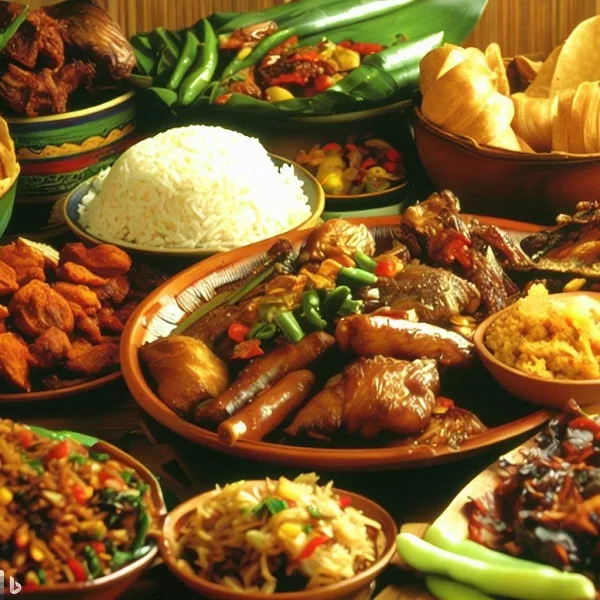
Filipino cuisine is a vibrant and diverse reflection of the country’s history, geography, and culture. Spanning over 7,000 islands, the Philippines has been influenced by various cultures, including Malay, Chinese, Spanish, and American, resulting in a unique fusion of flavors and cooking styles. In this article, we will explore some interesting facts about Filipino food.
- Rice is a staple food in the Philippines.
Rice is a significant part of every Filipino meal, and it is commonly served with almost every dish. It is usually steamed or boiled and is often eaten with a variety of meats, fish, and vegetables.
- Adobo is the national dish of the Philippines.
Adobo is a savory and tangy dish that consists of meat (usually chicken or pork) marinated in vinegar, soy sauce, and spices. It is then braised until tender and served with rice. Adobo is considered the national dish of the Philippines and is a popular comfort food for many Filipinos.
- Filipino cuisine has a unique blend of flavors.
Filipino cuisine is a fusion of various flavors and cooking styles influenced by Malay, Chinese, Spanish, and American cultures. The use of vinegar, soy sauce, and spices such as garlic and ginger is common in Filipino cooking, giving the food a unique taste.
- Filipino desserts are a must-try.
Filipino desserts are famous for their unique and rich flavors. Some popular desserts include leche flan (a creamy caramel custard), halo-halo (a dessert with shaved ice, evaporated milk, and various sweet toppings), and ube (a purple yam that is used in various desserts).
- Street food is a big part of Filipino cuisine.
Street food is a popular part of Filipino cuisine, and it is often sold by vendors in the streets and markets. Some popular street foods include fish balls, kwek-kwek (deep-fried quail eggs), and balut (a boiled fertilized duck egg).
- Filipino food is a celebration of community.
Filipino cuisine is often associated with communal eating and celebrations. Family and friends gather around the table to share food, stories, and laughter. The Filipino culture values hospitality and generosity, and it is reflected in the way they share and enjoy food.
- Filipino cuisine is gaining popularity worldwide.
In recent years, Filipino cuisine has gained popularity worldwide, with Filipino restaurants and food trucks popping up in various cities. Filipino chefs are also making waves in the culinary world, showcasing the rich flavors and diverse ingredients of Filipino cuisine.
In conclusion, Filipino cuisine is a unique and vibrant fusion of flavors and cultures, reflecting the country’s history and traditions. From the national dish adobo to the famous desserts and street food, Filipino food is a celebration of community, hospitality, and generosity. As more people discover the flavors and richness of Filipino cuisine, it is becoming a global culinary sensation.
Giovanni Carlo P. Bagayas is a seasoned travel guide and passionate explorer from the Philippines. With years of experience uncovering the hidden gems of his homeland, Giovanni has dedicated his career to showcasing the beauty, culture, and adventure that the Philippines has to offer. As the author of Best Philippines Travel Guide, he combines his expertise and love for travel to provide insightful tips, detailed itineraries, and captivating stories for travelers seeking unforgettable experiences in the Philippines. Giovanni’s mission is to inspire wanderlust and help visitors discover the true essence of his vibrant country.
